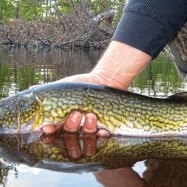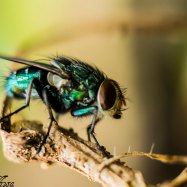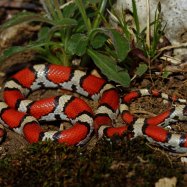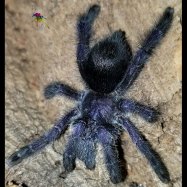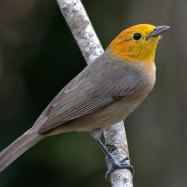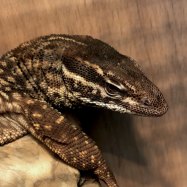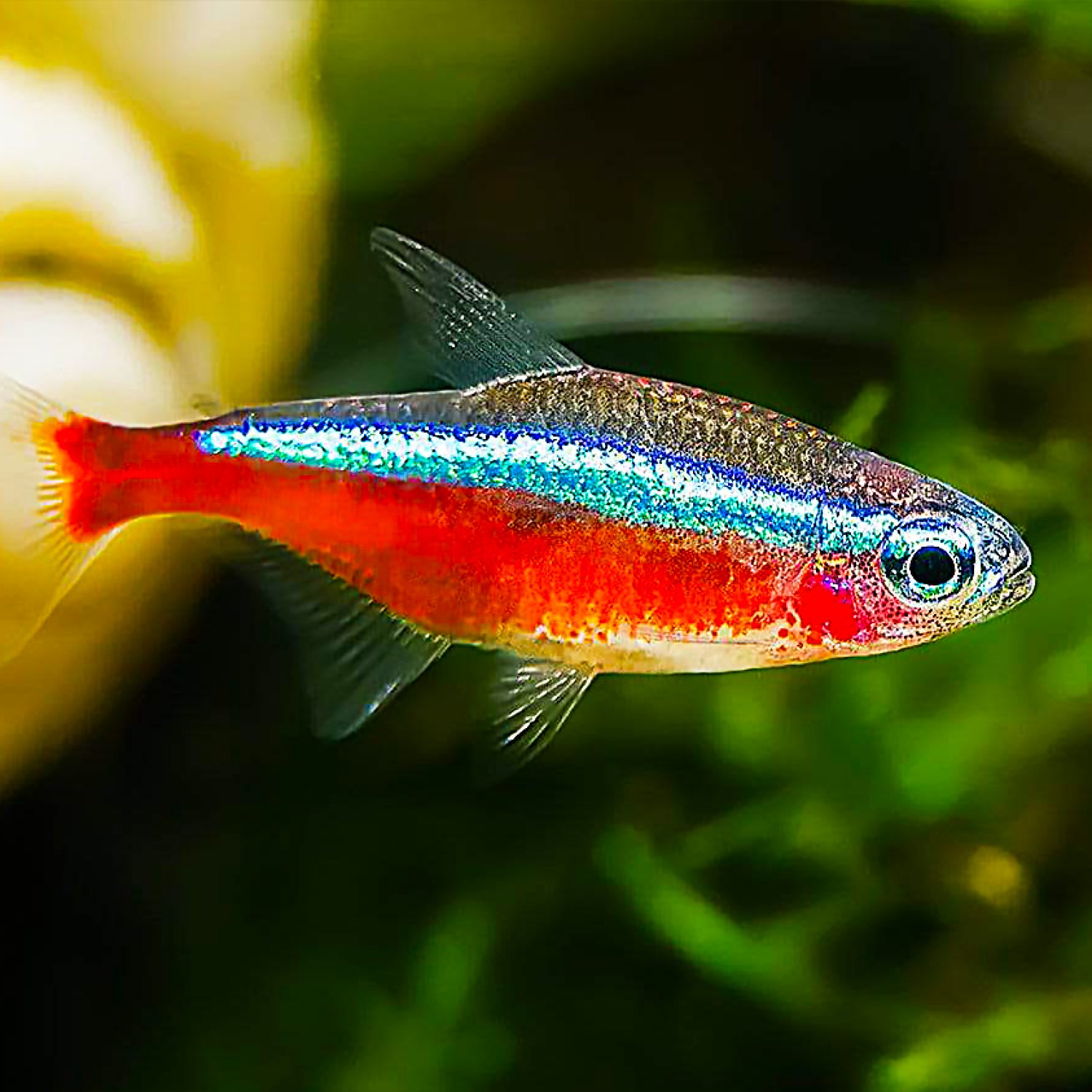
Neon Tetra
3-4 cm
Neon tetras are beautiful and popular tropical fish, known for their vibrant colors and easy care. These small fish, measuring 3-4 cm in length, are native to South America and belong to the family Characidae. With their slender body shape, neon tetras add a pop of color to any aquarium, making them a must-have for fish enthusiasts.
Animal Details Summary:
Common Name: Neon Tetra
Kingdom: Animalia
Habitat: Freshwater
Admiring the Mesmerizing Beauty of the Neon Tetra Fish
The world of fishkeeping is a colorful and exciting one, with a diverse array of aquatic creatures to choose from. Among the gems of the freshwater aquarium hobby is the neon tetra, a magnificent fish that has captured the hearts of fish enthusiasts and casual observers alike. With its vibrant coloration, peaceful demeanor, and interesting behaviors, the neon tetra is a true marvel of the animal kingdom. In this article, we will explore the dazzling world of the neon tetra, also known as Paracheirodon innesi, and learn more about these mesmerizing creatures Neon Tetra.A Tiny Fish with a Big Impact
The neon tetra is a small, freshwater fish that belongs to the Kingdom Animalia, Phylum Chordata, and Class Actinopterygii. This beautiful creature hails from the Amazon basin of South America, specifically Brazil. Its natural habitat is the calm, slow-moving streams and tributaries of the Amazon. Here, they live in large groups, known as shoals, hiding among plants and vegetation. This social species can often be seen swimming in unison, creating a stunning display of color and movement.The neon tetra, as the name suggests, is known for its striking coloration. Its body is a mix of iridescent blue and silver, with a bright red stripe spanning from its nose to its tail. This coloration is what makes this fish stand out in any aquarium, adding a pop of color and vibrancy to any tank. The fish's slender body shape, measuring only 3-4 cm in length, adds to its charm Neptune Grouper. The combination of its delicate features and striking color has made the neon tetra a popular choice among fishkeepers worldwide.
An Omnivorous Palate
One of the most remarkable aspects of the neon tetra is its ability to thrive on a varied diet. This species is an omnivore, which means that it can consume both plant and animal matter. In the wild, neon tetras feed on small insects, worms, and crustaceans. In captivity, they require a balanced diet of both protein and vegetation to ensure their well-being. In terms of protein, they can be fed high-quality flake or pellet food designed specifically for small tropical fish. Supplementing their diet with live or frozen food, such as bloodworms or daphnia, will also provide necessary nutrients. As for vegetation, neon tetras enjoy small pieces of blanched vegetables, such as zucchini or spinach. Their varied diet makes them easy to care for and provides an opportunity for fishkeepers to experiment with different types of food.A Peaceful and Social Creature
The neon tetra is a peaceful and social species that is easy to care for, making it an ideal fish for beginners. In the wild, they live in large shoals, and it is recommended that they be kept in groups of at least six in captivity. They are not aggressive and can coexist peacefully with other non-aggressive species of similar size. The only thing to be mindful of is their small size, which makes them vulnerable to more aggressive fish. Therefore, it is advisable to keep them with other peaceful species.One interesting behavior of the neon tetra is its schooling nature. In the wild, this species forms large shoals as a means of protection against predators. In captivity, this behavior can still be observed as they swim together in harmony, performing synchronized movements that are mesmerizing to watch. This schooling behavior can only be observed in a group, making it essential to keep neon tetras in groups of six or more.
Transforming your Aquarium with Neon Tetras
Adding a shoal of neon tetras to a freshwater aquarium is an excellent way to transform a simple tank into a spectacular display of color and movement. These fish are relatively easy to care for, and their social nature adds an air of liveliness to any tank.When setting up an aquarium for neon tetras, it is essential to mimic their natural habitat. A well-planted tank with plenty of hiding places will make them feel right at home. Ideally, the tank should be a minimum of 10 gallons for a group of neon tetras, with an additional 5 gallons for every two fish added.
It is important to maintain a clean and stable environment for neon tetras. Regular partial water changes, proper filtration, and monitoring of water parameters will ensure their well-being. The ideal water temperature for neon tetras is between 72-77°F (22-25°C), and the pH should be between 6.0-7.0.
In Conclusion
In summary, the neon tetra is a small, peaceful, and social species of fish that makes a great addition to any freshwater aquarium. Their striking coloration, interesting behaviors, and easy care requirements make them a popular choice among beginners and seasoned fishkeepers alike. As with any pet, it is important to do proper research and ensure that their needs are met to provide them with a healthy and fulfilling life. With proper care and attention, the stunning neon tetra will continue to be a shining star in the world of fishkeeping.

Neon Tetra
Animal Details Neon Tetra - Scientific Name: Paracheirodon innesi
- Category: Animals N
- Scientific Name: Paracheirodon innesi
- Common Name: Neon Tetra
- Kingdom: Animalia
- Phylum: Chordata
- Class: Actinopterygii
- Order: Characiformes
- Family: Characidae
- Habitat: Freshwater
- Feeding Method: Omnivorous
- Geographical Distribution: Amazon basin
- Country of Origin: Brazil
- Location: South America
- Animal Coloration: Blue, Red, and Silver
- Body Shape: Slender
- Length: 3-4 cm
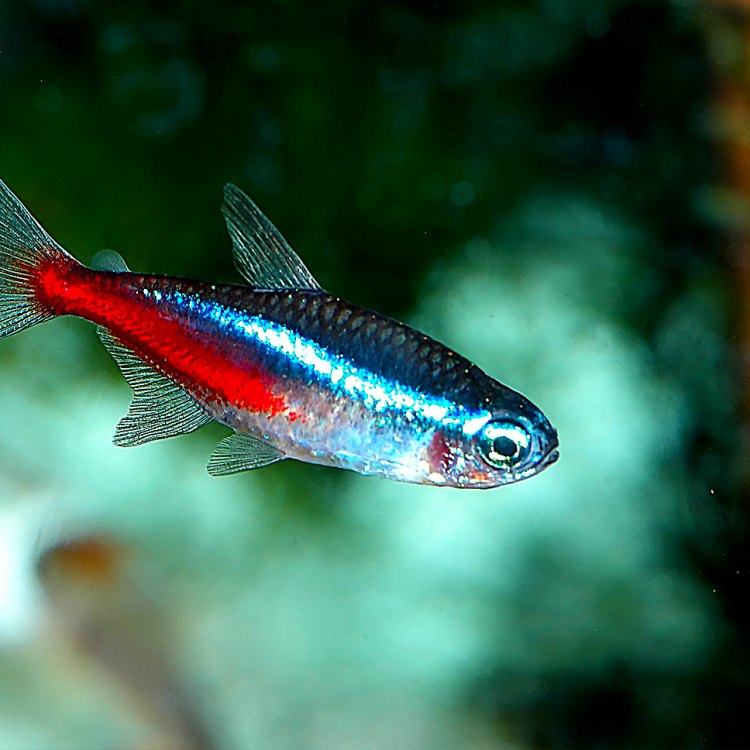
Neon Tetra
- Adult Size: 3 cm
- Average Lifespan: 5 years
- Reproduction: Egg-layers
- Reproductive Behavior: Group spawning
- Sound or Call: No
- Migration Pattern: Does not migrate
- Social Groups: Schools
- Behavior: Peaceful and shoaling
- Threats: Predation, habitat destruction
- Conservation Status: Least Concern
- Impact on Ecosystem: Important prey species
- Human Use: Ornamental fish
- Distinctive Features: Bright colors, neon stripe
- Interesting Facts: Male and female have different body shapes
- Predator: Larger fish, birds
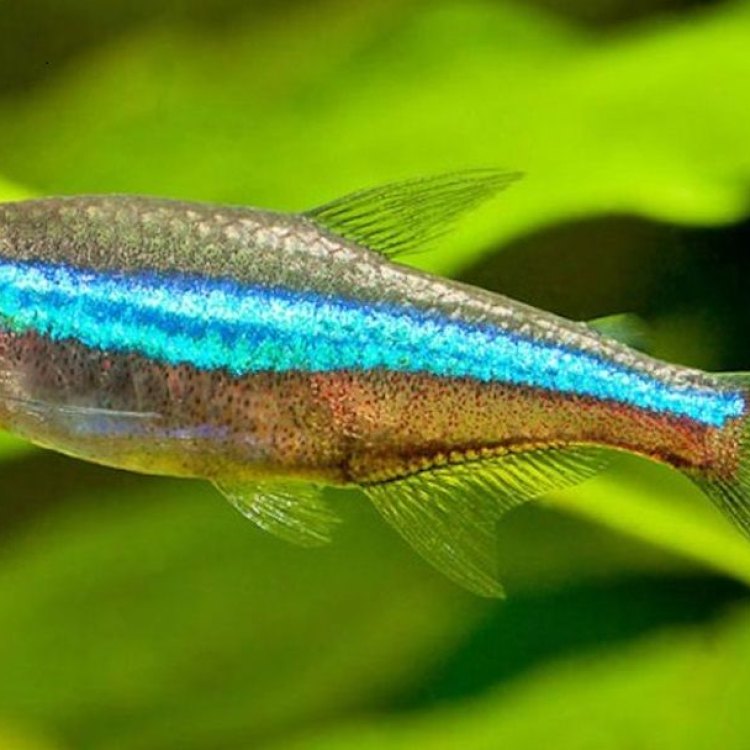
Paracheirodon innesi
The Luminous World of Neon Tetra: A Small But Mighty Species
Deep in the Amazon rainforest, in the dark and murky waters, there lives a vibrant and fascinating fish called the Neon Tetra. These tiny creatures, reaching an adult size of only 3 cm, are anything but ordinary. With their bright colors and unique reproductive behavior, they have captured the hearts of fish enthusiasts all over the world.But beyond their striking appearance, there is much to learn about this species PeaceOfAnimals.Com. From their lifespan to their impact on the ecosystem, let's dive into the world of Neon Tetras and discover the secrets of this incredible fish.
A Short but Meaningful Life
Despite their small size, Neon Tetras have a relatively long lifespan of up to five years in captivity. In their natural habitat, they can live for even longer. They are also known to thrive in well-maintained aquariums, making them a popular choice among hobbyists.However, the early days of a Neon Tetra's life are not easy. As they hatch from their eggs, they are vulnerable to predators, mainly larger fish and birds. This is why their reproductive behavior plays a crucial role in their survival.
Egg-Layers with a Unique Spawning Behavior
Neon Tetras are egg-layers, and their reproduction is quite fascinating. Unlike some fish species that lay eggs in hidden places, Neon Tetras engage in group spawning Neapolitan Mastiff. This means that both male and females release their eggs and sperm simultaneously, creating a cloud of tiny eggs that float in the water.During this process, the male and female also perform a mesmerizing dance, moving in a synchronized pattern. This behavior not only allows for a higher chance of fertilization, but it also serves as a defense mechanism against predators. The cloud of eggs confuses potential predators, making it difficult for them to spot a single egg to consume.
Silent but Social Creatures
One interesting fact about Neon Tetras is that they do not produce any sound or call. Instead, they communicate through visual displays, body language, and color changes. However, they are highly social creatures, and in their native habitat, they form large schools of up to hundreds of individuals.In an aquarium setting, it is essential to provide Neon Tetras with a shoaling environment, as they are happiest when surrounded by their own kind. A single Neon Tetra may become stressed and anxious without the company of other Tetras. Therefore, it is recommended to keep them in a group of at least six or more.
A Peaceful Species Yet Vulnerable to Threats
Neon Tetras are known for their peaceful nature, and they rarely show any signs of aggression towards other fish species. They are peaceful shoalers, and their bright colors create a beautiful display in well-lit aquariums.However, in the wild, Neon Tetras face various threats, the most significant being predation and habitat destruction. Their small size makes them easy prey for larger fish and birds. Additionally, their native habitat, the Amazon rainforest, is facing deforestation and pollution, leading to the destruction of their natural home.
A Conservation Status of Least Concern
Despite these threats, the Neon Tetra is currently listed as a species of Least Concern on the IUCN Red List. This is due to their widespread distribution and the lack of significant population declines. However, that does not mean we should become complacent and ignore the potential impact of human activities on their population.Moreover, as an important prey species in the ecosystem, the decline of Neon Tetras can have a significant impact on other species' survival. It is crucial to remember that everything in nature is connected, and the loss of one species can have a domino effect on others.
Ornamental Fish with Distinctive Features
Neon Tetras are a staple in the ornamental fish industry. Their bright blue, red, and silver coloring, along with their distinctive neon stripe, make them a popular choice for aquariums. They are relatively easy to care for and adapt well to a variety of water conditions, making them suitable for beginner fish keepers.However, it is crucial to avoid purchasing Neon Tetras from suppliers who engage in unsustainable practices, such as catching them from their natural habitat. Instead, look for reputable breeders who ethically produce Neon Tetras through breeding programs.
Different Body Shapes for Males and Females
One of the most fascinating facts about Neon Tetras is that male and female fish have different body shapes. The males have a more streamlined body shape, while females have a rounder and fuller abdomen. This difference is most noticeable during the breeding season when the females' abdomen becomes fuller as they prepare to release their eggs.Potential Predators of Neon Tetras
As mentioned earlier, Neon Tetras are preyed upon by larger fish and birds. In an aquarium setting, it is essential to be mindful of the tankmates you choose for your Neon Tetras. Avoid keeping them with aggressive or territorial fish, as it can lead to stress and potential harm to the Tetras.The Impact of Humans on Neon Tetra Populations
Aside from habitat destruction and unsustainable practices in the ornamental fish industry, human activities such as pollution and climate change can also have a significant impact on Neon Tetra populations. These tiny fish may seem insignificant in the grand scheme of things, but they play a vital role in the ecosystem as an important prey species.In Conclusion
The Neon Tetra may be small in size, but they are mighty in many ways. From their unique reproduction behavior to their peaceful and shoaling nature, these fish have captured the hearts of many. As we continue to learn more about this species, it is crucial to also be mindful of our actions and how they can impact the Neon Tetra and its home in the Amazon rainforest.By choosing to ethically source our pet fish and being mindful of the impact of our actions on the environment, we can help ensure that these luminous creatures continue to thrive in both their natural habitat and in our aquariums. So, the next time you admire the colorful display of a school of Neon Tetras, remember the importance of these small but magnificent fish in the larger ecosystem.

Admiring the Mesmerizing Beauty of the Neon Tetra Fish
Disclaimer: The content provided is for informational purposes only. We cannot guarantee the accuracy of the information on this page 100%. All information provided here may change without prior notice.


